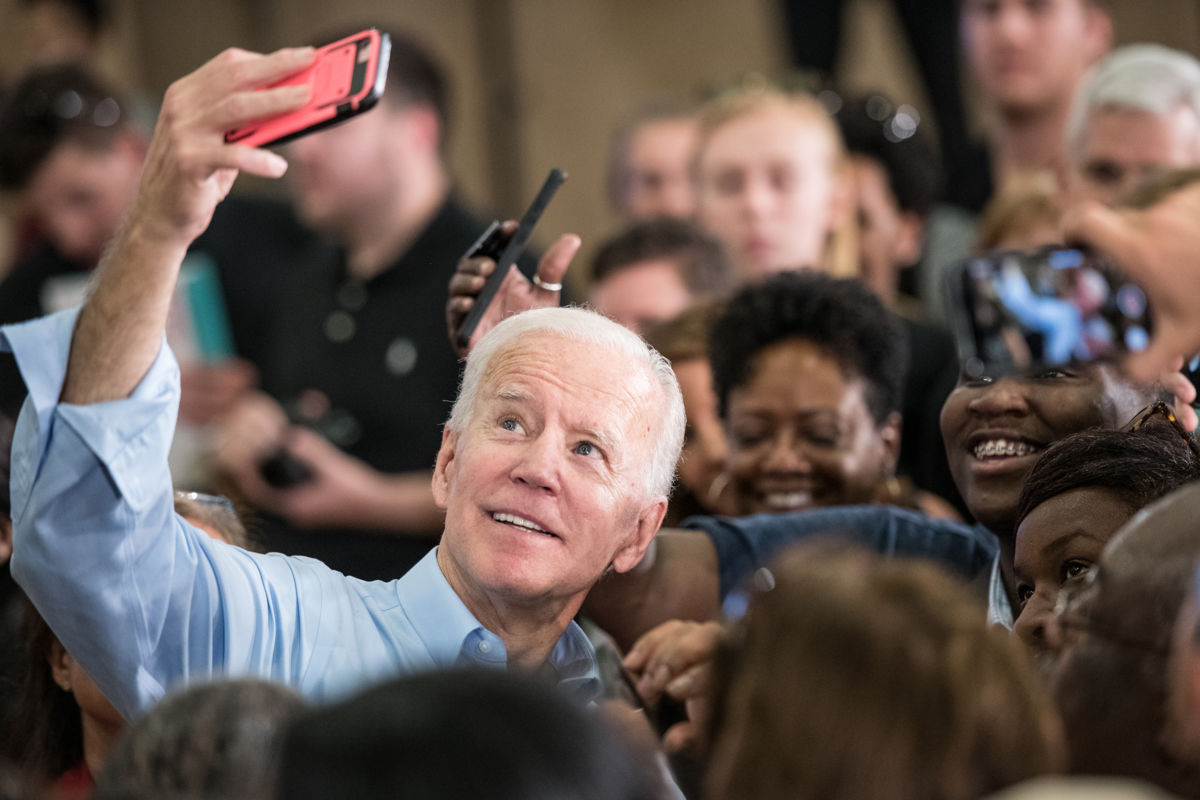Former Vice President and current 2020 presidential candidate Joe Biden is bolstering his front-runner status in the Democratic primary with a flurry of digital ad spending.
Although he declared his candidacy just two weeks ago, Biden has already surpassed most 2020 Democrats in online ad spending — shelling out more than $1.4 million between Facebook, Google and Twitter. Just two weeks in, Biden’s online political advertising spending already accounts for more than one in every $10 spent on digital ads by all major Democratic presidential contenders combined.
On the campaign trail, Biden often pitches himself opposing President Donald Trump rather than his Democratic primary opponents. It’s no different online. While some 2020 Democrats publicly lament being outraised by their primary opponents in fundraising appeals, Biden is keeping his focus on Trump.
“We’re off to an incredible start – but we still have a ways to go to catch up. The Trump campaign already has $40 million in the bank. Can you help us close the gap with a $5 donation today?” Biden asks in one Facebook ad.
In an attempt to find support from young voters and small donors, Biden is working with Civis Analytics, a Democratic digital consulting firm backed by former Google chairman Eric Schmidt, CNBC reported.
Like most candidates, Biden spends a large chunk of his digital money on Facebook, dropping $777,702 through May 5. Facebook is typically the social network of choice for presidential candidates looking to build lists and find coveted small donors. Trump used Facebook to attract a massive grassroots donor base — and he’s going back to the well for 2020.
Democratic presidential contenders have spent a combined $8.2 million on Facebook so far. Elizabeth Warren has spent more than any other Democratic candidate on Mark Zuckerberg’s platform, racking up $1.46 million in ad spending, while Kamala Harris comes in second with $1.3 million.
Harris is capitalizing on calls for Attorney General Bill Barr to resign following her performance grilling Barr last week. She is urging Facebook users to sign her petition calling for Barr’s resignation, a list-building tactic enabling her campaign to harvest email addresses and cell phone numbers of potential donors.
Warren’s many specific policy initiatives enable her to target users with a message that is likely to resonate. Her posts about student loan debt target those ages 18-34; those on fighting for military families mostly target users age 55 and over.
Sen. Amy Klobuchar’s presidential campaign has spent nearly $1 million for political advertising across all three platforms, with the bulk of that — $785,134 — on Facebook ads. This comes as Klobuchar is anticipated to re-introduce the Honest Ads Act, a bill that would increase online political ad disclosure, with Sen. Lindsey Graham (R-S.C.) replacing the late John McCain (R-Ariz.) as the new Republican lead sponsor.
Beto O’Rourke’s presidential campaign has spent just $883,225 on digital ads, a sharp drop from the more than $10 million shelled out by his 2018 Senate campaign. But that disparity comes with a caveat. O’Rourke’s Senate campaign spent heavily on digital advertising even after his failed Senate run in Texas, hyping his “plans for 2020” with tens of thousands of dollars in ads in the weeks leading up to his official presidential campaign kick-off.
Nearly every candidate spends most of their digital cash on Facebook, but Pete Buttigieg is the notable exception. The South Bend, Ind., mayor has spent a whopping $415,500 on Google, despite spending just $181,757 on Facebook and nothing on Twitter. Buttigieg splurged on April 13, the day before his official campaign announcement, spending $197,900 on Google ads.
Many other Democrats in the crowded 2020 primary field have spent little on digital advertising by comparison. John Hickenlooper has spent $126,534 on digital ads so far. The former Colorado governor didn’t do well with small donors to start 2019, pulling in just one-tenth of his campaign dollars from those giving $200 or less.
Almost across the board, major Democratic presidential candidates have yet to make a foray into TV advertising. Having formally announced his candidacy long before other Democrats in the field, former Rep. John Delaney (D-Md.) is an exception to that. His campaign got a head start, pouring more than $1 million into TV advertising, according to CRP’s analysis of records from the Federal Communications Commission. Delaney’s 2020 campaign has spent just $217,619 on Facebook, Google and Twitter digital ads combined.
Facebook, Google and Twitter’s political ad databases provide a glimpse into the growing role of digital advertising in politics that was unavailable in prior election cycles. Due to limited disclosure requirements by the Federal Election Commission (FEC) and lingering issues with voluntary disclosures from online platforms, however, there is still much to be done for disclosure requirements to keep up to speed with new technologies.
Candidates running for federal office reported spending more than $71.9 million on digital services to the FEC during the 2018 election cycle, and the 2020 cycle is already on track to eclipse that.
5 Days Left: All gifts to Truthout now matched!
From now until the end of the year, all donations to Truthout will be matched dollar for dollar up to $50,000! Thanks to a generous supporter, your one-time gift today will be matched immediately. As well, your monthly donation will be matched for the whole first year, doubling your impact.
We have just 5 days left to raise $50,000 and receive the full match.
This matching gift comes at a critical time. As Trump attempts to silence dissenting voices and oppositional nonprofits, reader support is our best defense against the right-wing agenda.
Help Truthout confront Trump’s fascism in 2026, and have your donation matched now!
